Michael Zeigler: Kelp diving in Southern California
Ask any southern California diver why they don their thick wetsuits and drysuits and “brave” the temperate waters along our coast, and the answers will most likely be similar. The abundance of amazing shore dives and a playground of islands relatively close to the mainland have a common theme that attracts underwater explorers from around the world: kelp. Macrocystis pyrifera (giant kelp) is an abundant algae which not only serves as food and shelter for countless critters, it’s also intertwined in our everyday lives. If you brushed your teeth today, chances are very good that you consumed kelp. Besides the aforementioned peppermint paste, kelp is used as a binding agent (e.g. algin) in several common items like ice cream and make-up. Hooray for kelp!
For underwater photographers, kelp forests present both inspiration and challenges. The forests are filled with life from the holdfasts to the canopy and everywhere in between. Their blades and stipes sway with the surge and sunlight casts dancing light onto the sea floor. Entire dives could be spent simply taking in this beauty. It can be difficult, however, to do justice for such stunning scenes with a camera. When shooting wide-angle, the dynamic range of the kelp forests will push your skills and your camera’s capabilities to the limit. Bright natural light streaming through the canopy contrasted by deep, rich shadows make creating a single, well-balanced frame a challenge. Couple that with the light-absorbing algae, and your strobes will be put to the test as well. It is very satisfying, however, when it all comes together. Those same light-absorbing properties of giant kelp can be make it an ideal backdrop for macro and super macro images. The kelp effortlessly relinquishes the spotlight to the subject, whether it’s a nudibranch, amphipod, or other colorful critter. So the next time you’re in the kelp forest be sure to inspect the blades on your way up to (and during) your safety stop. Keep that camera powered on because you never know what you’ll find!
I owe much of my inspiration to photograph the natural history of our underwater coastline to giant kelp and its relatives. Highlighting (and sharing) the gorgeous critters that rely so heavily on the algae for their existence helps raise awareness of the beauty the lies just beneath the surface and so close to millions of people. It’s my goal that by raising awareness, more people will be willing to work hard to protect and preserve our natural world.
See more of Michael’s work at Sea in Focus or with his company Immersed Imaging, the company he runs with Todd Winner.
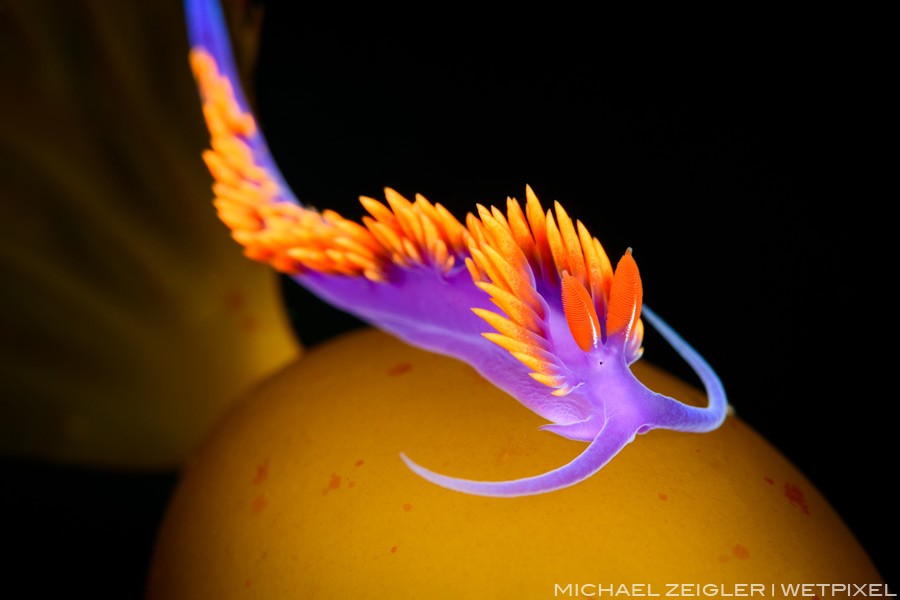
Perhaps my favorite nudibranch to photograph, the Spanish shawl (Flabellina iodinea), is one of the most colorful of the 125+ species that are documented in the waters off California. I found this one cruising on a pneumatocyst (float) of giant kelp
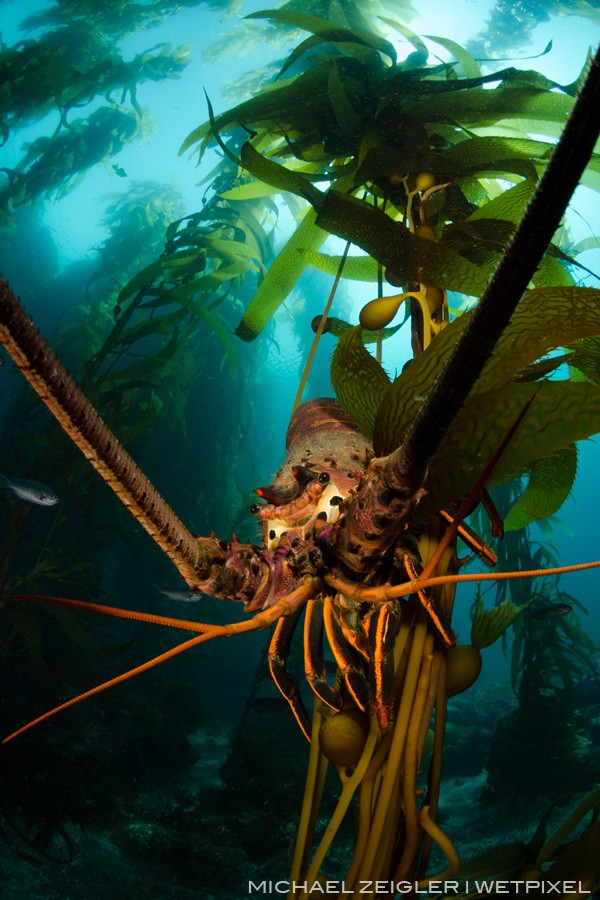
Juvenile sea lions chased this lobster (Panulirus interruptus) into the kelp at the sea lion rookery at Santa Barbara Island. I happened to be in the right place at the right time as I only managed snapping two frames before it sped off to the safety
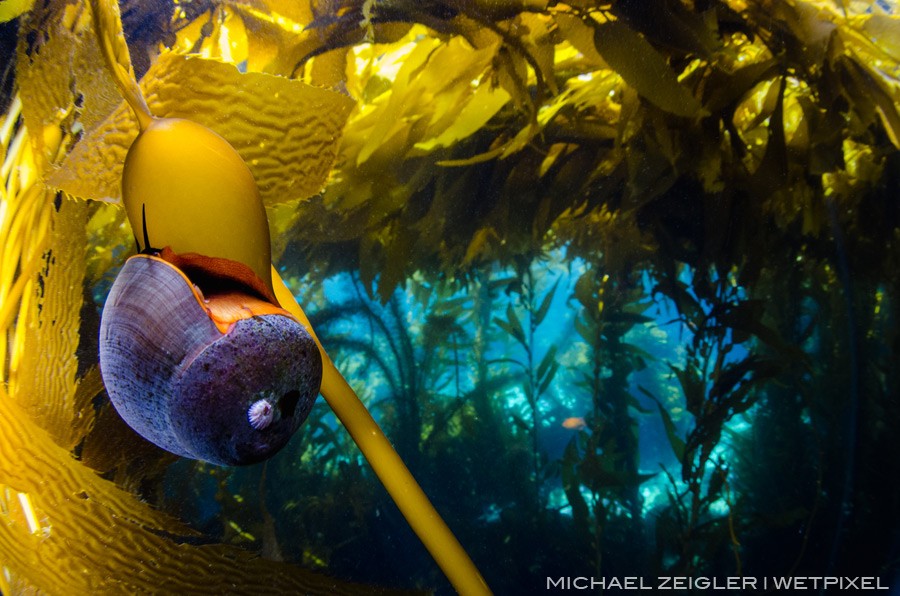
This Norris' top snail (Norrisia norrisii) has a front row seat to this gorgeous scene under the kelp canopy near the west end of Catalina Island.
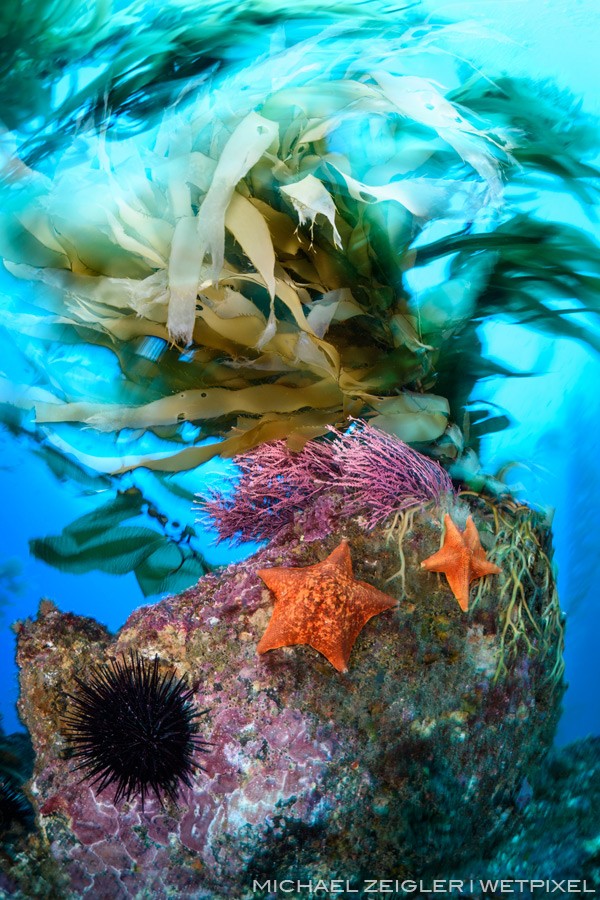
Giant kelp (Macrocystis pyrifera) sways and bat stars (Patiria miniata) cling to the reef as the underwater world of Sutil Island is battered with strong surge and ripping currents.
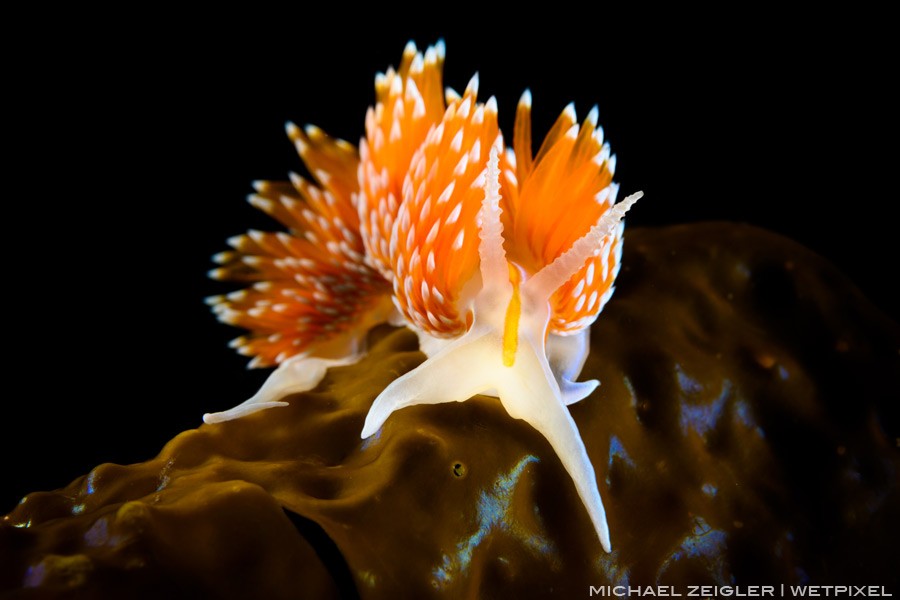
An Opalescent nudibranch (Hermissenda opalescens) on a blade of kelp at the popluar dive site called Bird Rock, near the isthmus at Catalina Island.
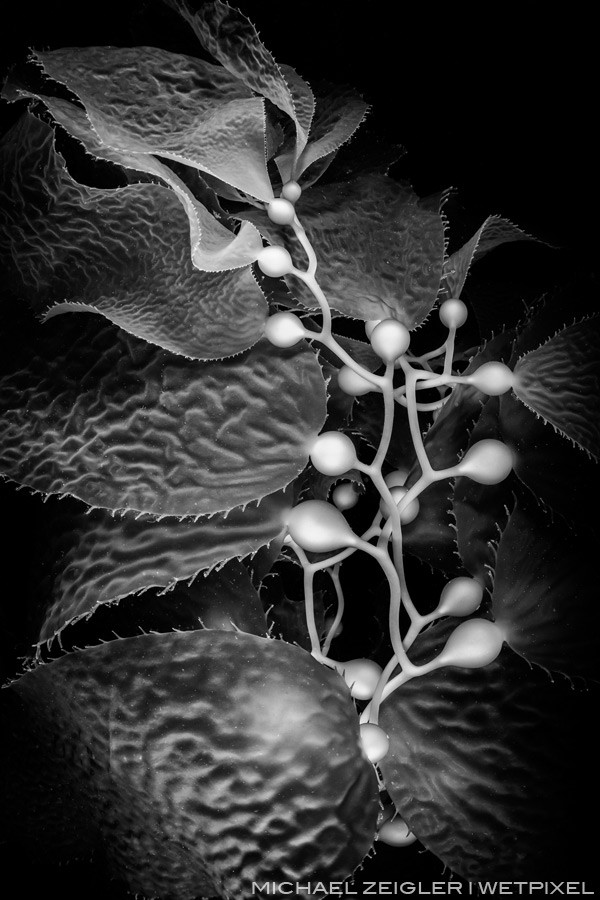
Giant kelp (Macrocystis pyrifera) is a provider of shelther and food for countless species of marine critters. It's also found in several common household items like toothpaste, ice cream, and make-up. This gorgeous specimen was photographed at
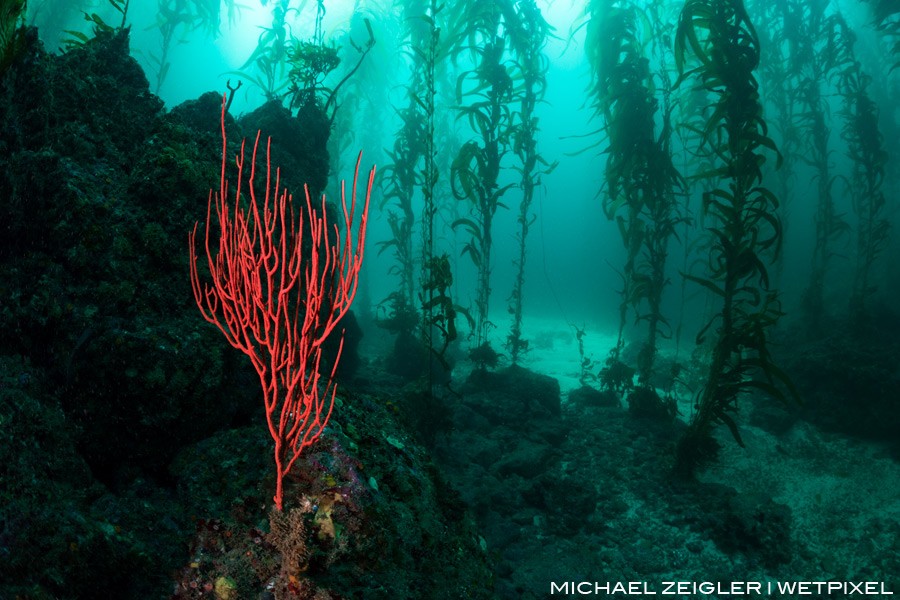
A red gorgonian (Lophogorgia chilensis) stands out from an otherwise drab rock near Santa Cruz Island.
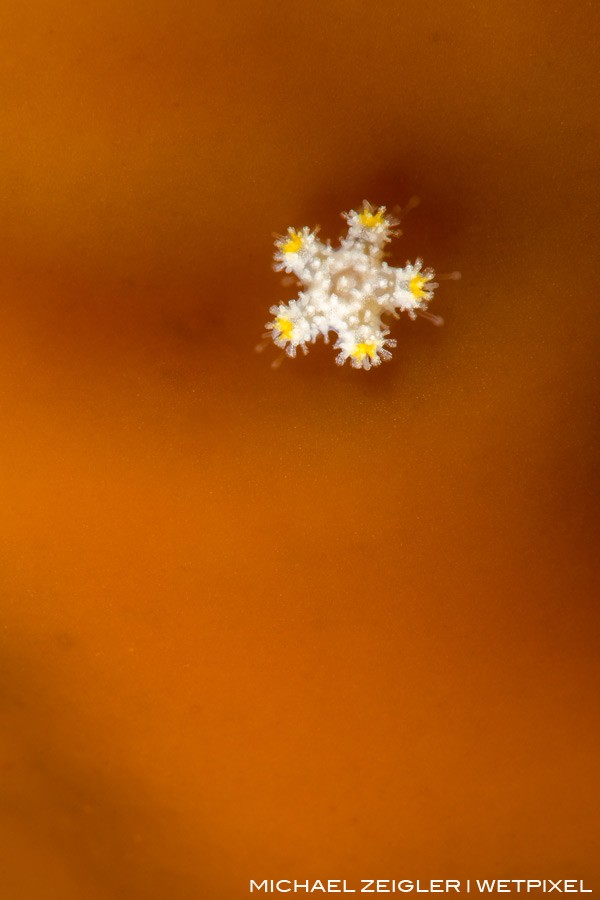
A juvenile giant-spined sea star (Pisaster giganteus), no larger than the eraser on the tip of a pencil, seeking shelter on a blade of giant kelp.
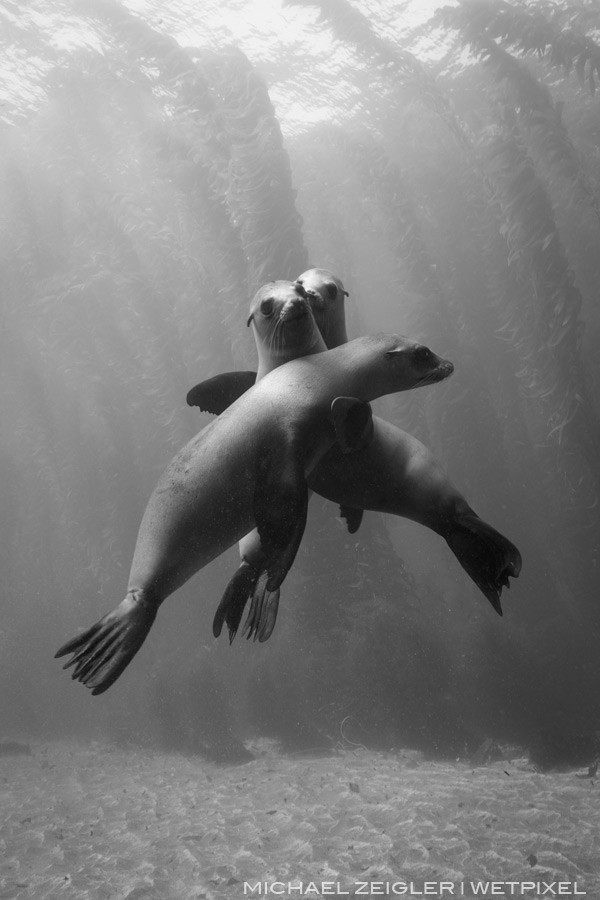
I've always like the title of "Gossip" for this image of a trio of sea lions (Zalophus californianus) at Santa Barbara Island.
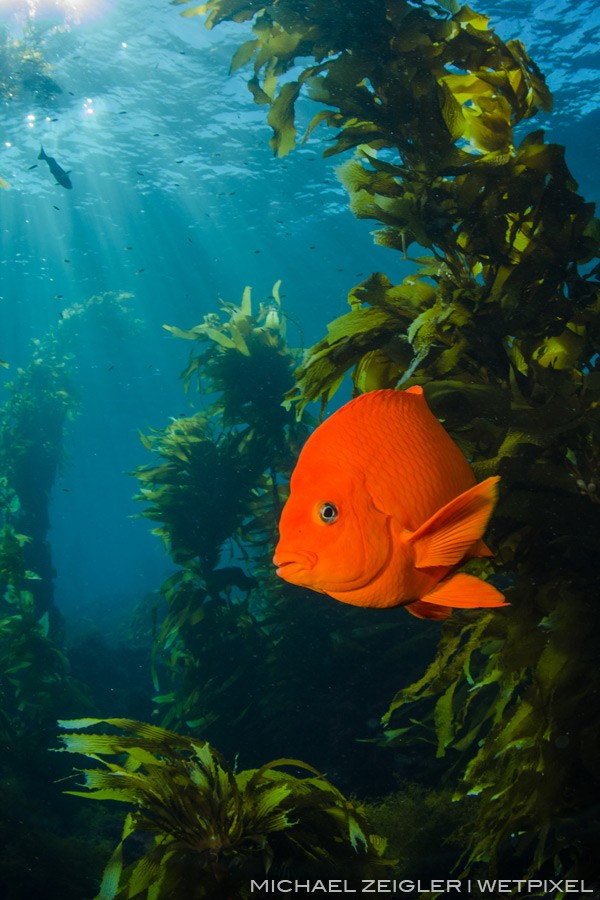
Garibaldi (Hypsypops rubicundus) in the dive park at Casino Point, Catalina Island. Visibility this day was incredible.
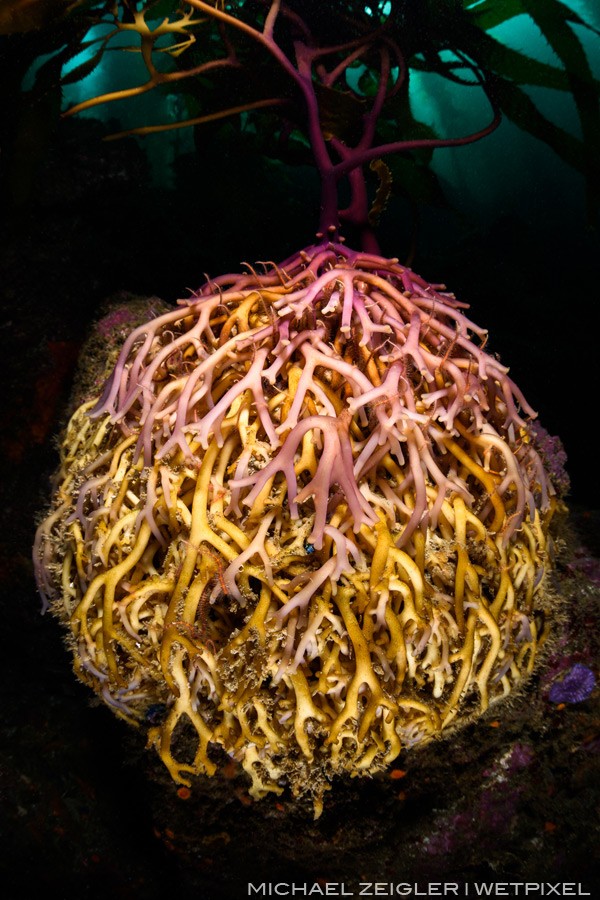
The unsung hero of the kelp forest, the holdfasts of giant kelp not only anchor the towering algae to the reef but also provide shelter to a variety of tiny critters like brittle stars and nudibranchs. Unlike true root systems, the holdfasts do not p
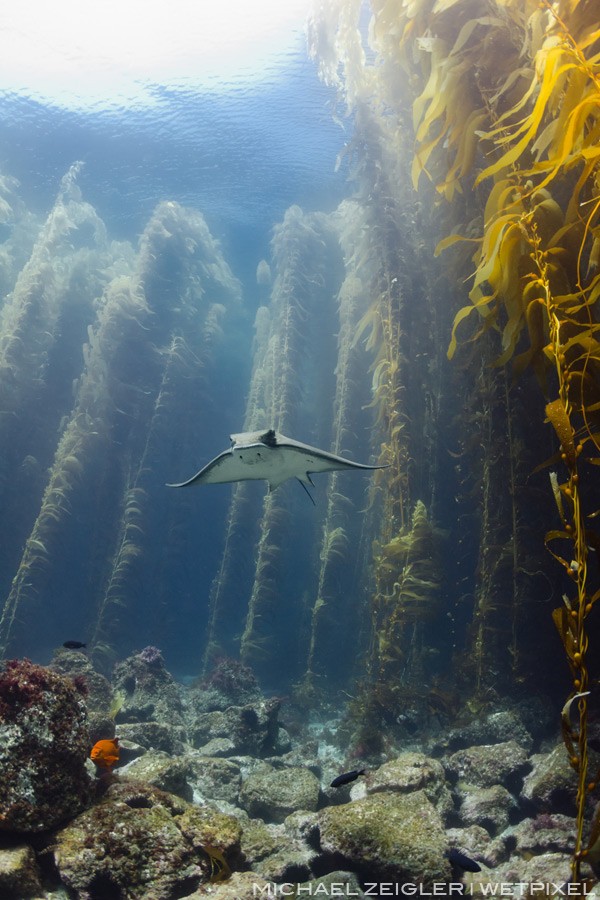
A bat ray (Myliobatis californica) cruises through a clearing in the kelp forest at near Santa Barbara Island. This still remains to be one of my most memorable encounters underwater.
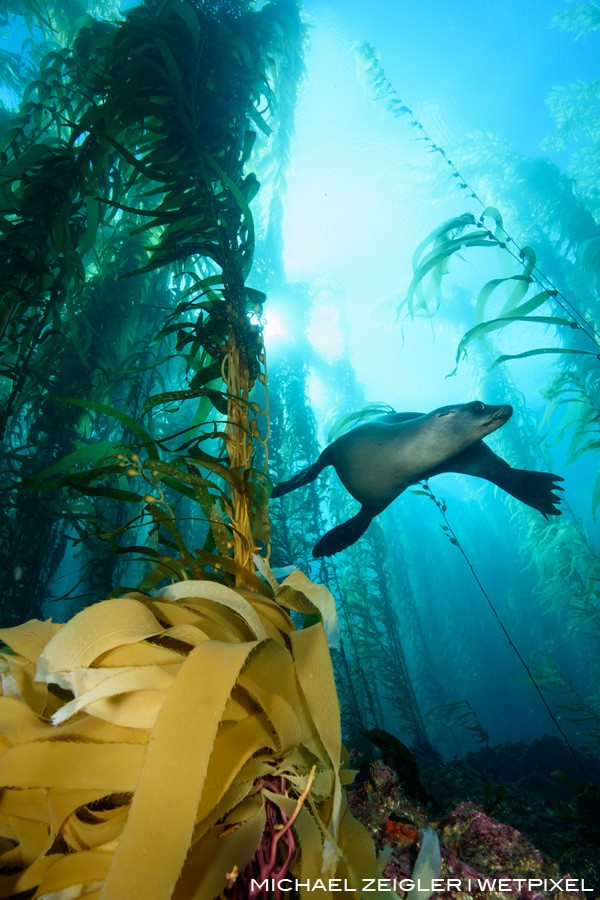
Sea lion (Zalophus californianus) enjoying its kelp forest playground near the rookery at Santa Barbara Island.
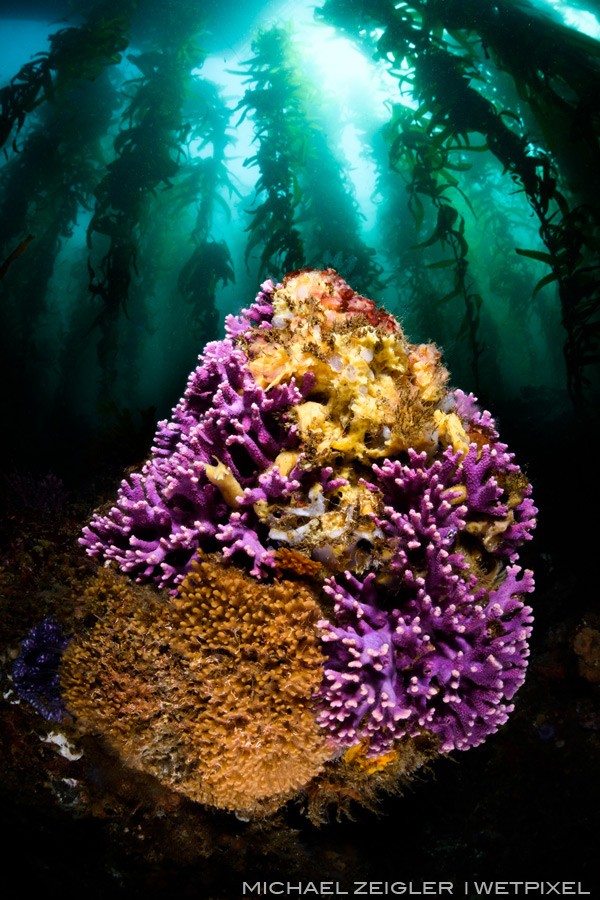
Purple hydrocoral (Sylaster californicus) amongst the towering kelp forest of Gull Island. It's rare in Southern California (and a special treat) to encounter this colorful hydrocoral at such shallow depths and amongst the kelp.
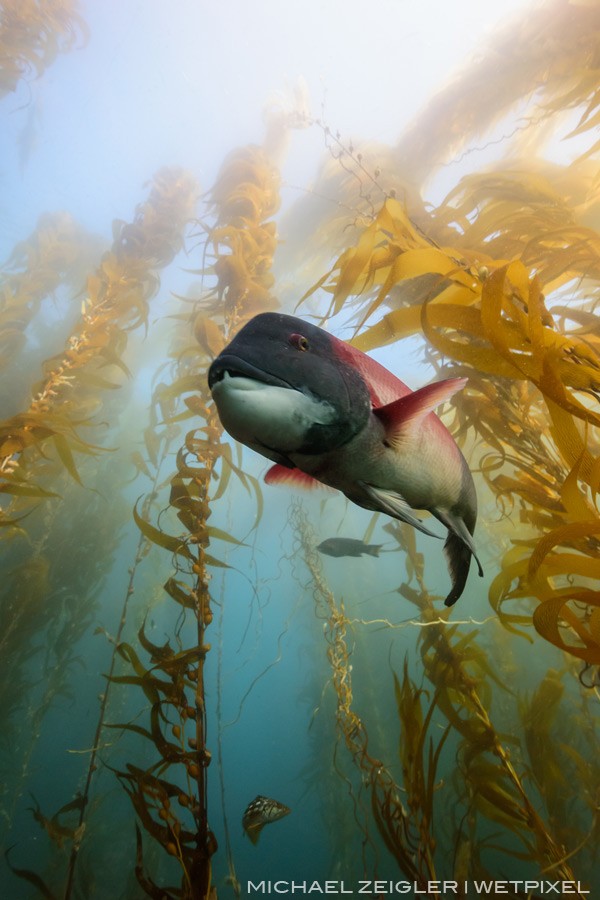
A large male sheepead (Semicossyphus pulcher) investigates a noisy intruder within its domain near Santa Barbara Island. This image was created using only ambient light and a Magic Filter.
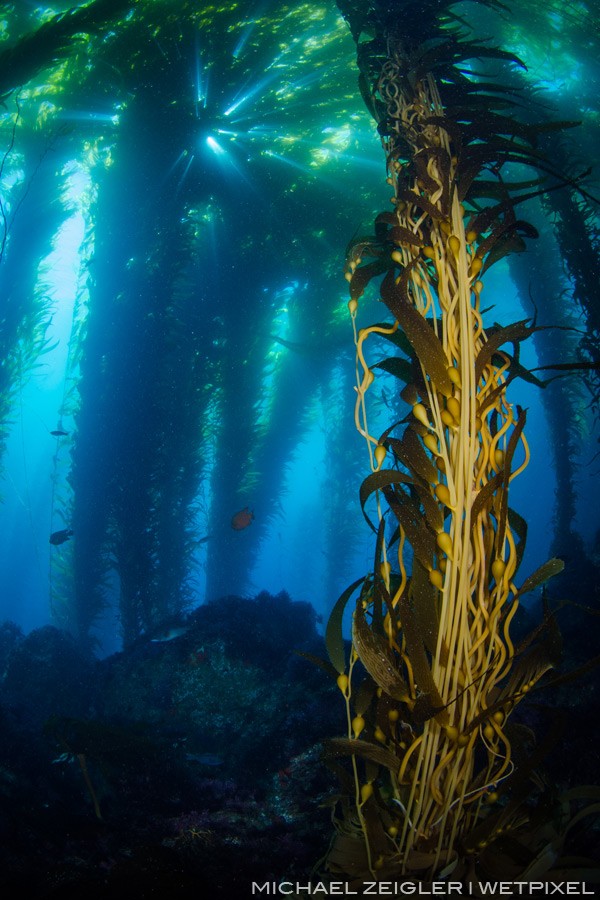
Sun bursting through the thick canopy of giant kelp (Macrocystis pyrifera) during aquarium-like conditions at Land'ss End, along the "back side" of Catalina Island.
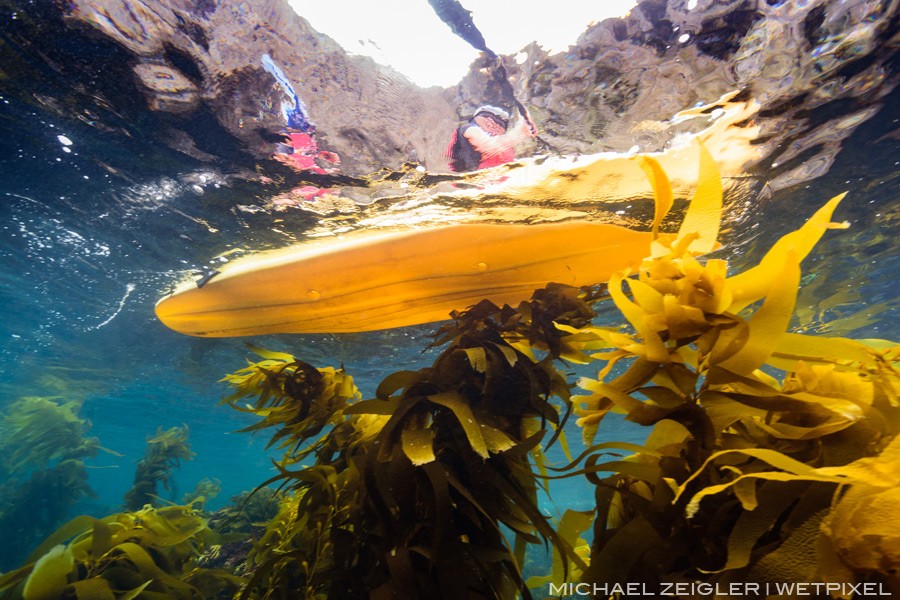
Unsuspecting kayakers enjoy the shallow kelp forests of Anacapa Island, California.
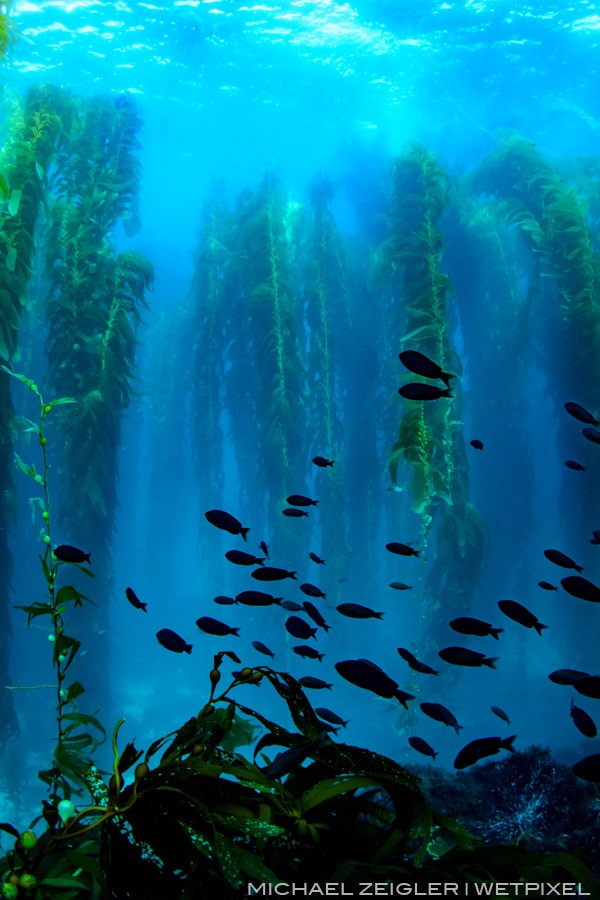
A school of blacksmith (Chromis punctipinnis) dancing in the shadows against the backdrop of a majestic kelp forest off the coast of Santa Barbara Island.